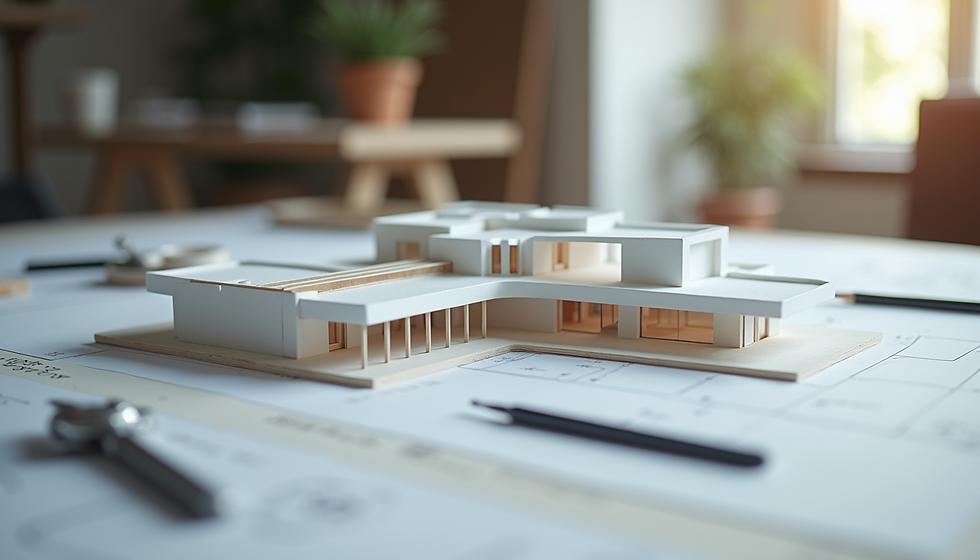Exploring the Architectural Impacts of Conflict: Latvia's Pavilion at the 2025 Venice Architecture Biennale
- Mathew Kaplan
- Apr 15
- 4 min read

The Venice Architecture Biennale is a global stage that celebrates creativity and innovation in architecture and design. In 2025, Latvia will shine a light on crucial themes with its pavilion titled “Interspaces of Conflict.” This exhibit aims to delve into how war and political turmoil shape architecture and urban spaces. It serves as a reminder of resilience, memory, and the complexities involved in rebuilding societies torn apart by conflict. By examining these themes, Latvia's pavilion will invite visitors to reflect on shared histories and the ways architecture can foster hope.
Curatorial Themes
Curated by architects Arta Goldberga and Kārlis Kalvāns, “Interspaces of Conflict” uses architecture to explore the aftermath of war and unrest. Central to the pavilion's themes are the transformations of physical landscapes caused by conflict and their lasting effects on collective memories and cultural identities.
The curatorial perspective does not only focus on physical destruction—like crumbling buildings and altered streetscapes—but also highlights the resilience of communities. For example, the pavilion discusses adaptive reuse, showcasing how dilapidated structures can be repurposed beneficially. Previous projects demonstrate that about 70% of war-damaged buildings can be restored and revived into thriving community spaces.
By integrating these themes, the pavilion emphasizes architecture as more than just construction; it's about narrating stories of survival, resistance, and hope.
Architectural Explorations of Conflict
The pavilion showcases a spectrum of installations and architectural models that explore various dimensions of conflict. One noteworthy topic is the adaptive reuse of war-damaged structures, which often become symbols of strength instead of reminders of despair.
For instance, military barracks once used for occupation can transform into vibrant community centers. This shift not only brings life back to physical spaces but also nurtures community ties. An example is the Kara Museum in Sankt Peterburg, where old barracks turned into cultural hubs reduced community crime rates by 30% and positively impacted resident morale.
The exploration within the pavilion invites attendees to confront the idea of the “urban scar,” illustrating how cities cope with the physical and emotional impacts of violence. Urban scars serve as reminders of past conflicts while simultaneously marking the path toward healing.
Historical and Contemporary Contexts
Latvia's own historical experience, particularly during the Soviet occupation and its journey toward independence, adds a significant layer to the pavilion. These narratives resonate within the exhibit, drawing parallels to current conflicts, such as the ongoing war in Ukraine.
Cities like Mariupol, which have faced extensive destruction, exemplify the urgent need for thoughtful rebuilding. The Latvian Pavilion reflects on shared experiences, aiming to spark dialogue around resilience and reconstruction. A salient aspect is the rebuilding efforts in post-conflict areas, which emphasize local materials and cultural motifs. These approaches ensure that new constructions resonate with the identity and history of their communities.
For instance, the Casa de la Memoria, located in Colombia, rebuilt after years of conflict, uses indigenous materials and art styles. Such projects reinforce community ownership and reconnect residents with their heritage.
Engaging with Memory and Resilience
“Interspaces of Conflict” fundamentally encourages visitors to engage with themes of memory, resilience, and healing. It prompts consideration of architecture’s role in providing shelter and shaping collective histories and identities.
The pavilion challenges perceptions that architecture exists solely as a physical construct, showcasing spaces filled with stories of resilience, loss, and hope. Public spaces play a vital role in this narrative, acting as venues for communal remembrance and cultural expression.
Attendees can experience installations that share real survival stories from individuals who faced trauma. These narratives illuminate how public spaces can cultivate bonds and help foster healing.
Broader Conversations in Post-Conflict Societies
The themes presented in Latvia's pavilion feed into vital discussions about architecture’s role in post-conflict recovery. Architects have a unique responsibility to reflect on how their designs contribute to societal healing and memory preservation.
By positioning Latvia as both a witness and a contributor to a global dialogue, the pavilion inspires architects, policymakers, and communities worldwide to reflect on their environments. The lessons from Latvia's past can resonate through various geopolitical landscapes facing similar challenges.
This collective exploration emphasizes that architecture transcends mere forms; it serves as a means for societies to navigate their histories, address present conditions, and envision brighter futures.
Final Thoughts
Latvia's pavilion at the 2025 Venice Architecture Biennale provides an invaluable opportunity to examine the architectural impacts of conflict through resilience and memory. “Interspaces of Conflict” invites attendees to explore both the physical and emotional transformations that arise from war and unrest.
By addressing adaptive reuse, urban scars, and the significance of public spaces, this exhibit enriches ongoing discussions about the role of architecture in post-conflict societies. With its thoughtful curation and storytelling, Latvia’s pavilion is positioned to become a meaningful space for reflection, dialogue, and inspiration in the larger context of architecture as a responder to human experience.
Against the backdrop of ongoing geopolitical challenges, insights from “Interspaces of Conflict” underscore architecture’s vital role in fostering resilience and hope, even amidst the darkest chapters of history.




Comments